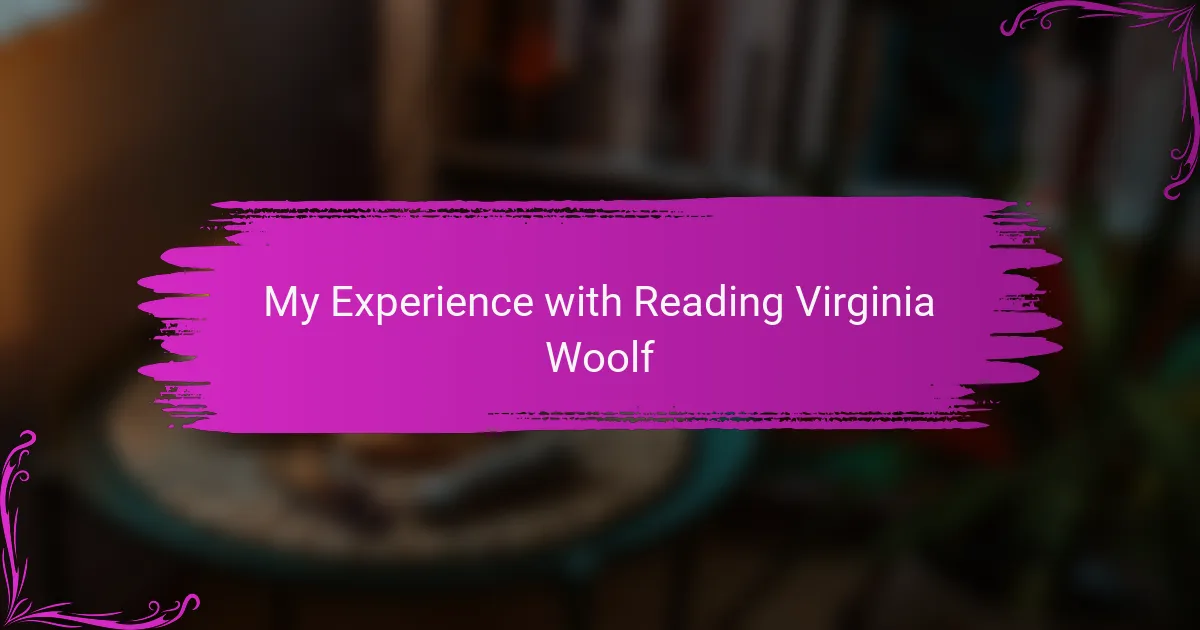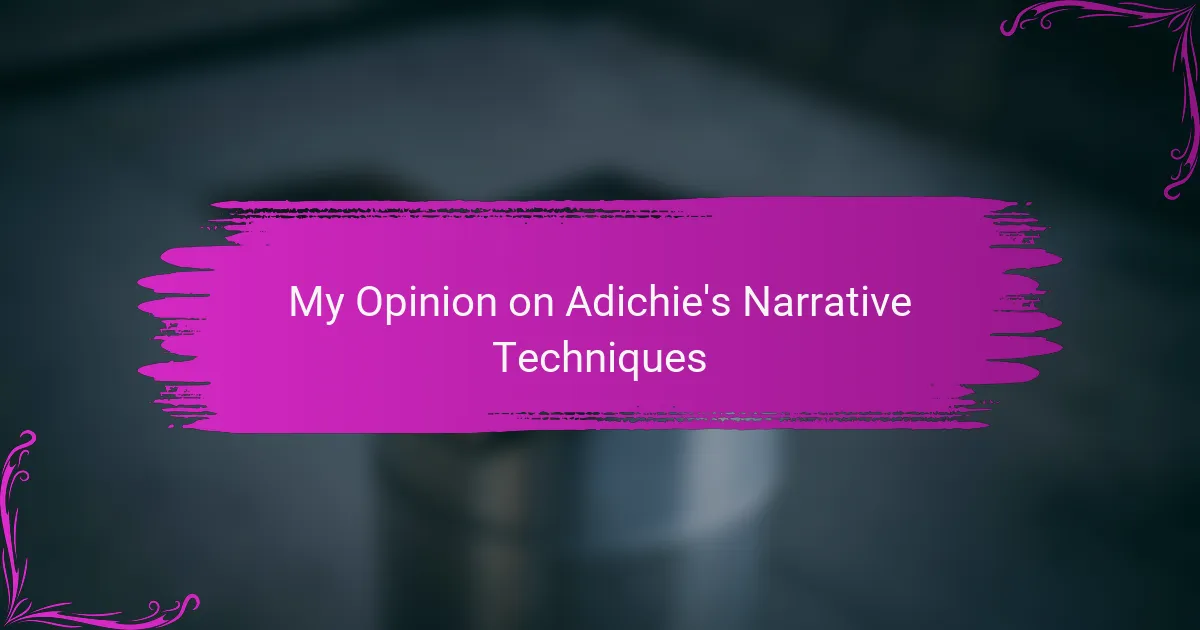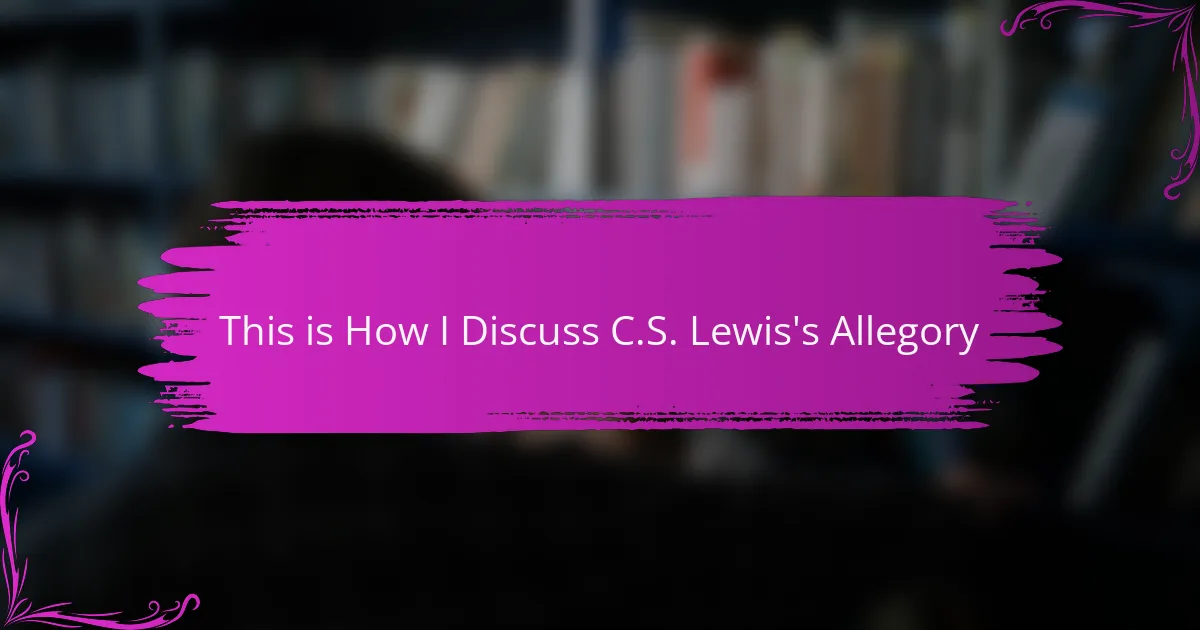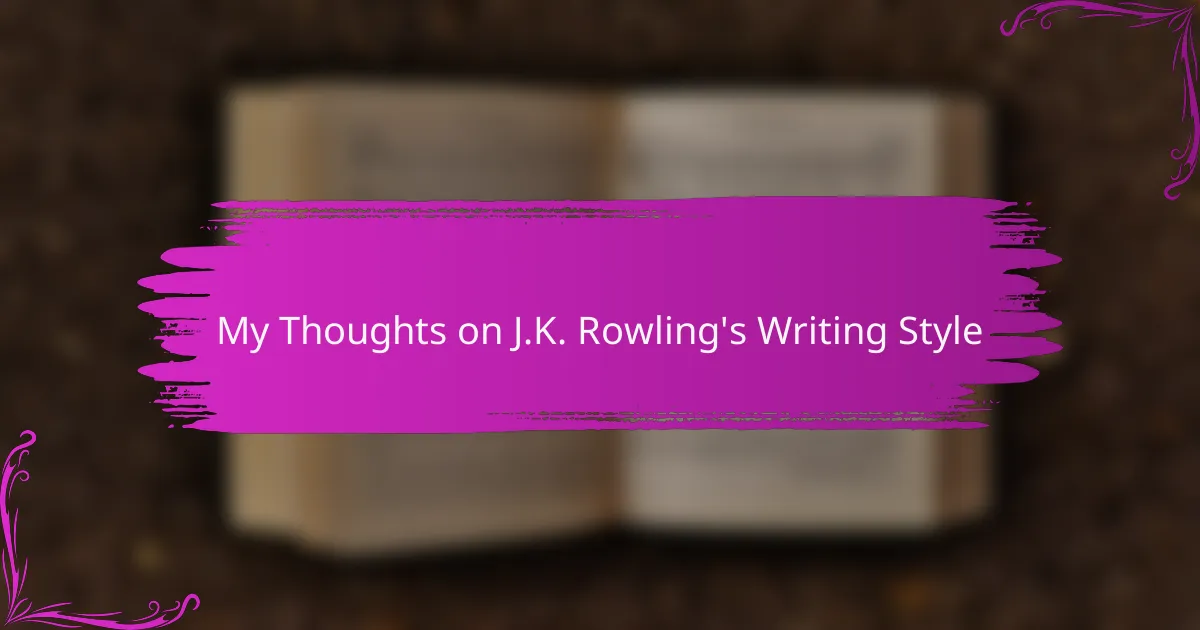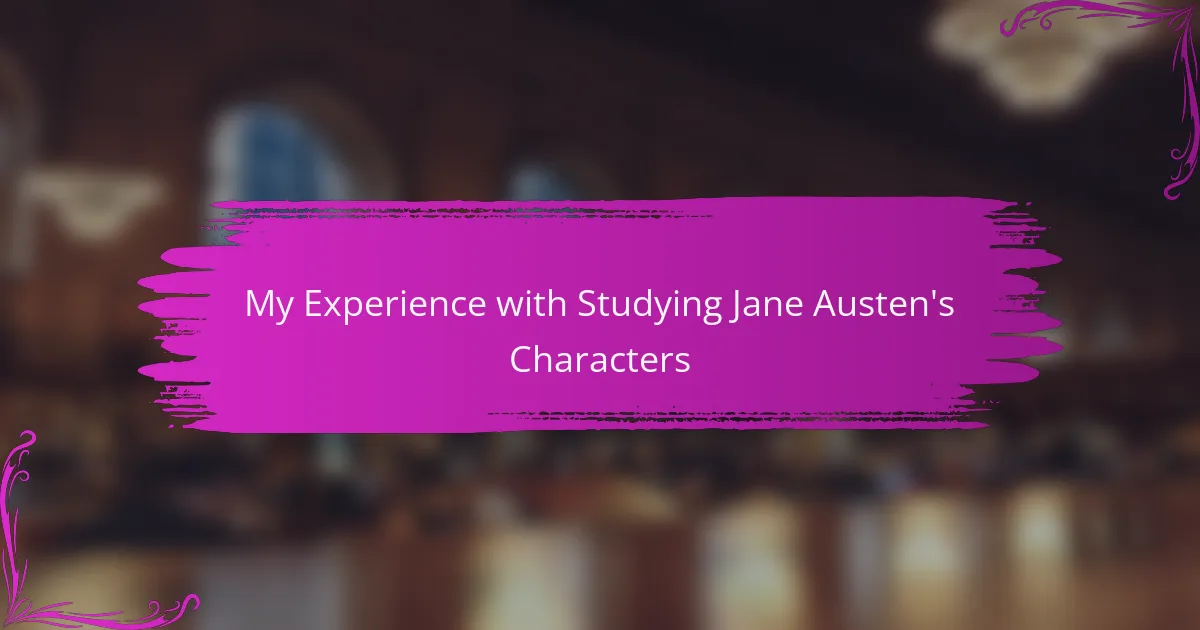Key takeaways
- Virginia Woolf’s literary style, particularly her use of stream of consciousness, invites readers to explore complex human emotions and thoughts deeply.
- Reading classic literature, such as Woolf’s works, enhances empathy and critical thinking by connecting readers with diverse perspectives and timeless themes.
- Woolf’s narratives challenge societal norms and expectations, especially related to women’s identities, prompting discussions about gender roles that remain relevant today.
- Effective strategies for analyzing literature include close reading, contextualization, and focusing on imagery and character development to gain a deeper understanding of the text.
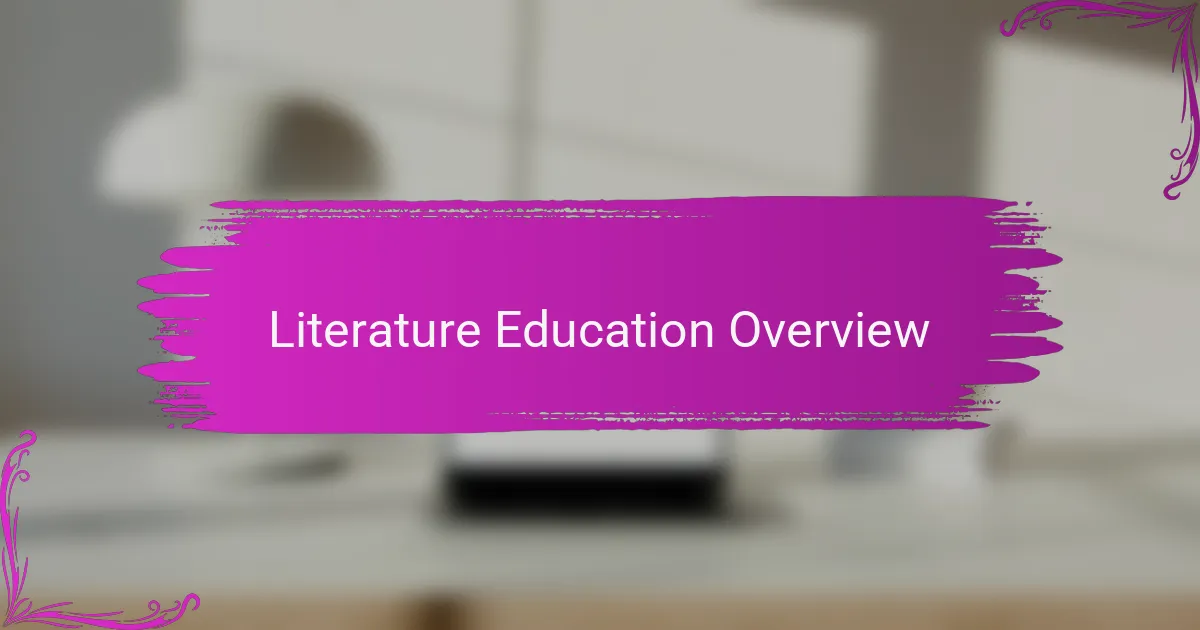
Literature Education Overview
Literature education has a special way of shaping our understanding of both the world and ourselves. I remember the first time I picked up a Virginia Woolf novel; her prose felt like a deep dive into the complexities of human emotions and consciousness. It’s fascinating how her narrative style encourages readers to explore their inner thoughts, making literature a mirror reflecting our own experiences.
Woolf’s writing often blurs the lines between reality and perception, which I found both challenging and rewarding. It pushed me to think critically about the structure of storytelling and the fluidity of time within narratives. The way she crafted her characters was incredibly moving, inviting me to empathize with their struggles in ways I hadn’t experienced before.
Here’s a comparison of key features in Woolf’s works versus traditional narrative styles.
| Feature | Virginia Woolf | Traditional Narrative |
|---|---|---|
| Narrative Style | Stream of Consciousness | Linear Storytelling |
| Character Development | Internal Thoughts Focused | Action and Dialogue Driven |
| Time Representation | Fluid and Non-linear | Fixed Chronology |
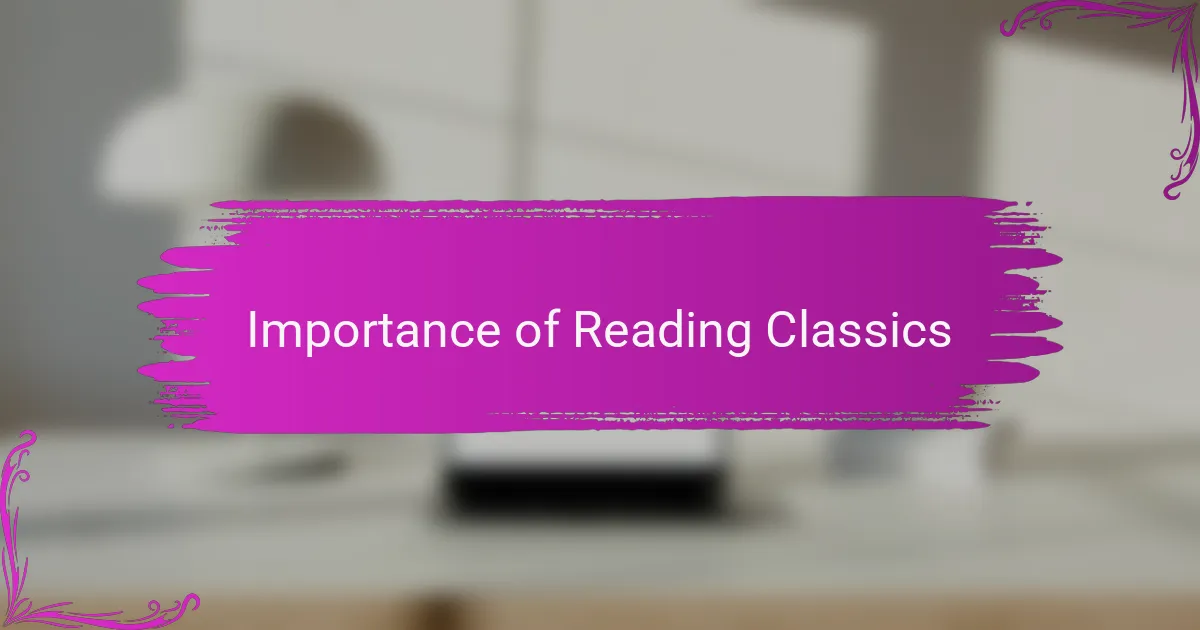
Importance of Reading Classics
Reading classics, like the works of Virginia Woolf, offers profound insights into human experiences that resonate across time. I vividly remember how Woolf’s “Mrs. Dalloway” made me reflect on the complexity of time and consciousness. Engaging with these texts not only enhances literary appreciation but also cultivates empathy by connecting us with diverse characters and experiences.
Classics often challenge our perspectives, prompting deep discussions. When I discussed “To the Lighthouse” with friends, we uncovered layers about relationships and identity that sparked lively debates. These conversations enriched my understanding and made the reading experience memorable.
Experiencing literature from the past allows us to see the evolution of language, ideas, and society. It’s fascinating to reflect on how issues Woolf tackled still resonate today, pushing us to confront our thoughts and feelings reflectively and critically.
| Benefits of Reading Classics | Examples from Virginia Woolf |
|---|---|
| Enhances Empathy | Characters like Clarissa Dalloway show varied human emotions and experiences. |
| Encourages Critical Thinking | Woolf’s stream of consciousness technique challenges readers to think deeply about time and identity. |
| Connects Past and Present | The themes in “Mrs. Dalloway” remain relevant, addressing mental health and social norms. |
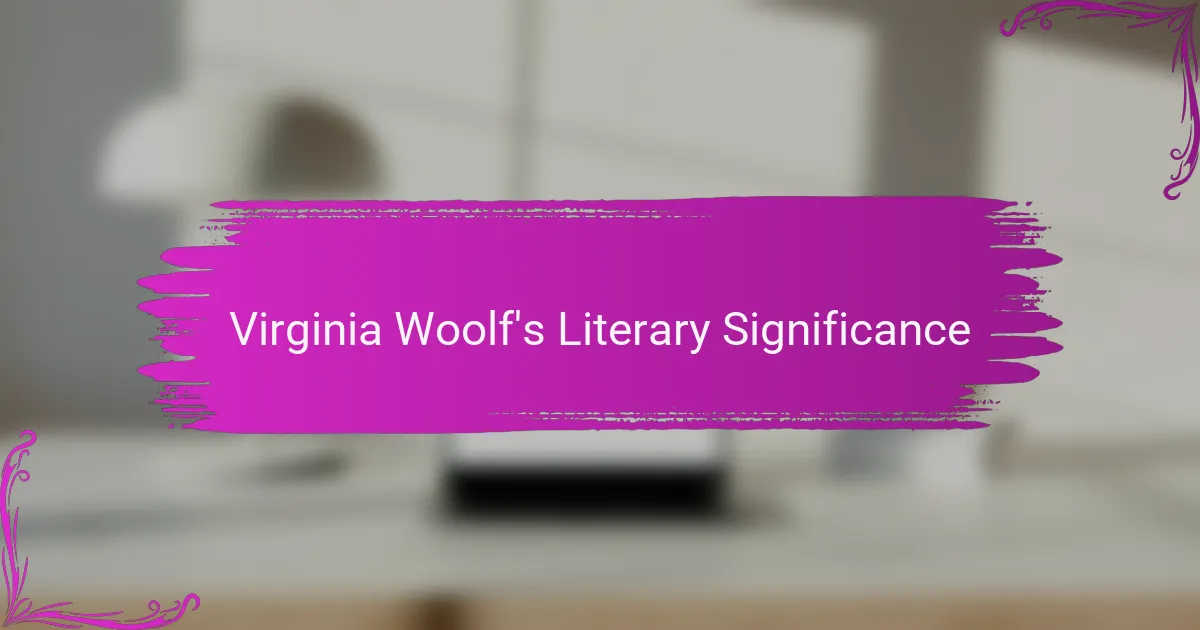
Virginia Woolf’s Literary Significance
Woolf’s literary significance lies in her masterful use of stream of consciousness, a technique that immerses readers in the intricate layers of thought and feeling that define human experience. When I first encountered this style, it felt liberating yet daunting; it challenged me to engage with characters on a deeply personal level. The fluidity of her prose made me ponder, how often do we consider the inner workings of our own minds in the stories we tell?
Her works also dissect the boundaries of time and identity, creating narratives that mirror the complexities of reality. I remember grappling with the non-linear timelines in “To the Lighthouse” — it made me reflect on the fluidity of my own life. Woolf prompts us to ask: what does it mean to truly live in the moment, and how do our perceptions shape our reality?
Moreover, Woolf shines a spotlight on the inner lives of women, challenging societal norms and expectations of her time. Reading “Mrs. Dalloway” opened my eyes to the struggles of women navigating personal and social pressures. It raised questions about the roles assigned to us and how we can redefine our identities despite those constraints. This exploration remains relevant today, inspiring conversations about gender and identity that continue to resonate.
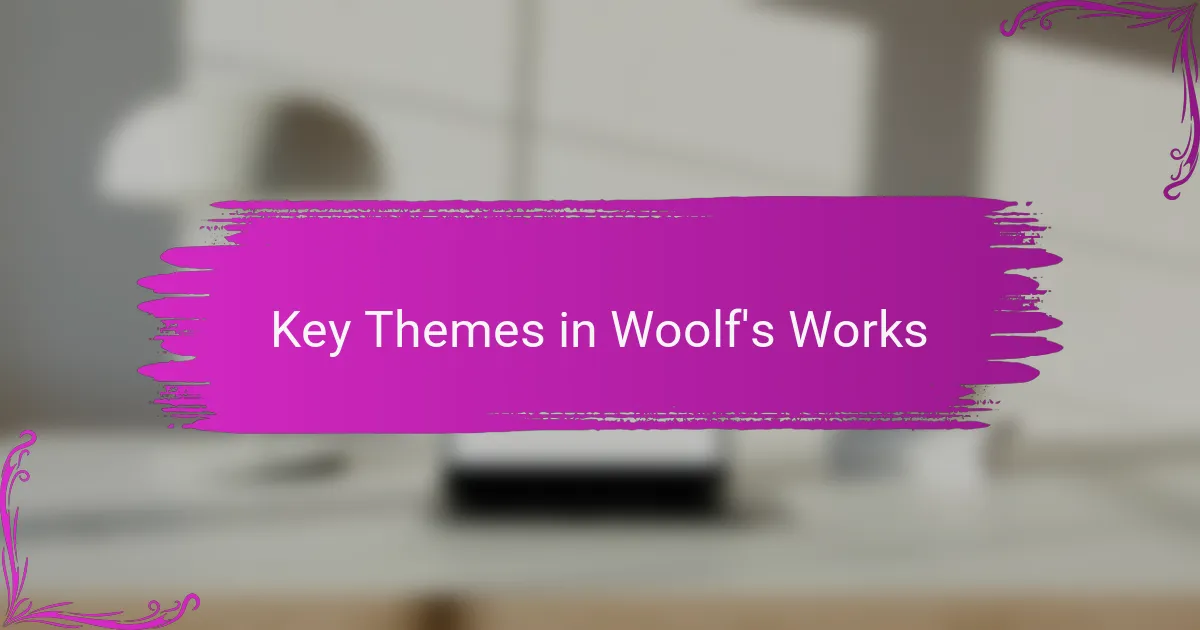
Key Themes in Woolf’s Works
Woolf’s exploration of consciousness is one of the most striking themes in her works. I often found myself swept up in her characters’ internal worlds, feeling their joys and sorrows as if they were my own. This intimate connection between reader and character prompts me to wonder: how deeply do we truly understand those around us, even in our everyday lives?
Another key theme is the fluid nature of time, which Woolf examines masterfully. Reading “To the Lighthouse,” I felt as if time was an ocean rather than a straight line, ebbing and flowing with memories and experiences. It forced me to consider how my own perceptions of time influence my life choices and relationships.
Woolf’s works also highlight the role of women within society, challenging the norms that dictate their identities. Engaging with “Mrs. Dalloway,” I was struck by Clarissa’s internal struggles, which mirrored many women’s experiences even today. It left me pondering how far we’ve come and how much more work lies ahead in redefining our roles and narratives.
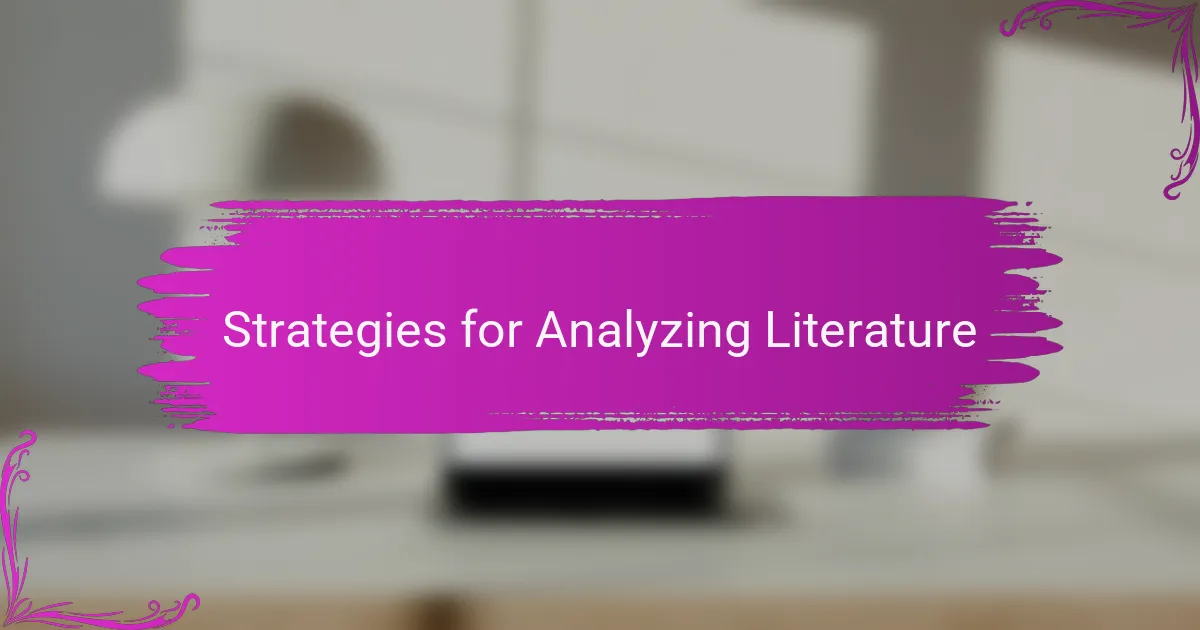
Strategies for Analyzing Literature
When I delve into Virginia Woolf’s works, I find that strategies for analyzing literature can significantly enhance the reading experience. One effective method I’ve adopted is close reading, which involves slowing down and attending to each word and sentence. I remember reading “To the Lighthouse” and being captivated by the nuances of Woolf’s stream-of-consciousness style. It felt like peeling back layers of emotion and thought, leading to deeper understanding.
Another key strategy in my analysis involves contextualizing the text. Understanding Woolf’s life, the societal influences of her time, and the broader modernist movement adds richness to each reading. For instance, learning about her struggles with mental health helped me appreciate the depth of melancholy in her prose.
- Focus on imagery and symbolism to uncover deeper meanings.
- Examine character development and relationships for thematic insights.
- Explore the historical and cultural context surrounding the work.
- Look for patterns in writing style, such as stream-of-consciousness or narrative shifts.
- Take notes and reflect on emotional reactions to key passages, helping to connect personally with the text.
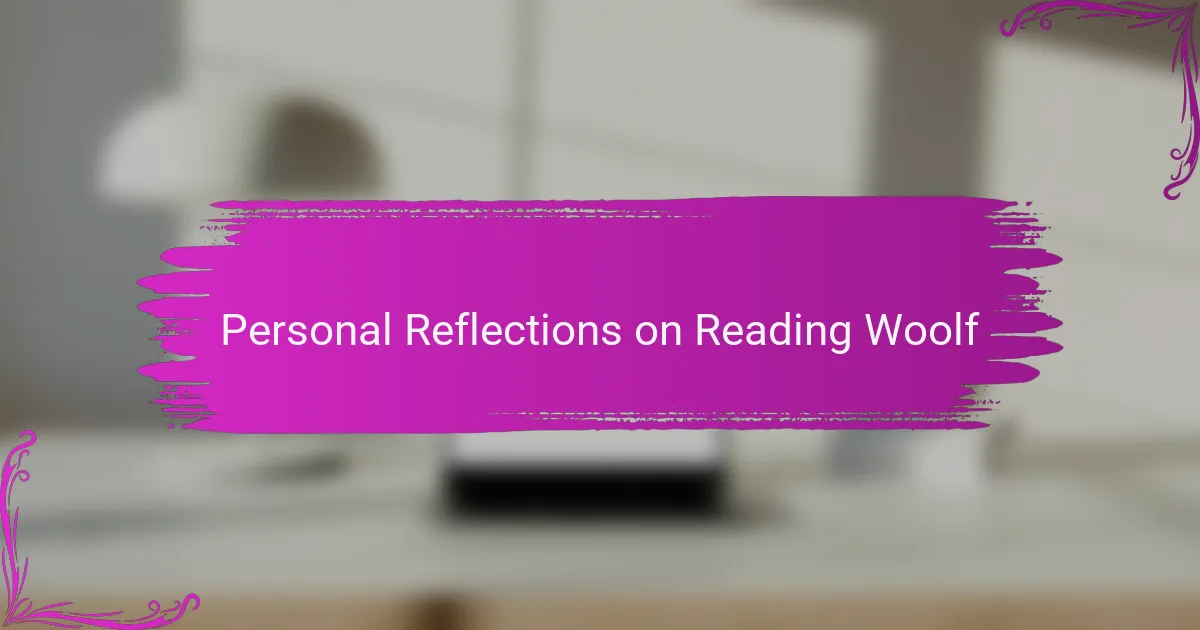
Personal Reflections on Reading Woolf
Reading Virginia Woolf has always felt like stepping into a rollercoaster of emotions and ideas. I recall the first time I encountered “Mrs. Dalloway.” I found myself getting lost in Clarissa’s thoughts, and it was almost as if I was peeking into her soul. This connection made me reflect on my own experiences and how often we overlook the complexity of our thoughts in daily life.
What struck me most about Woolf’s writing is the way she challenges conventional narratives. As I navigated the fluid storytelling in “To the Lighthouse,” I was struck by the realization of how subjective time can be. It got me thinking: are we not all living within our own timelines, influenced by our memories and emotions? This made reading her work not just an activity, but an insightful journey into my own consciousness.
I’ve also felt a profound emotional resonance with Woolf’s exploration of women’s identities. Reflecting on the internal struggles of her characters, I was reminded of my own experiences in society. How do we define who we are amidst external expectations? Woolf’s works prompted me to grapple with that question, and I still value the courage they inspire to embrace our authentic selves.
